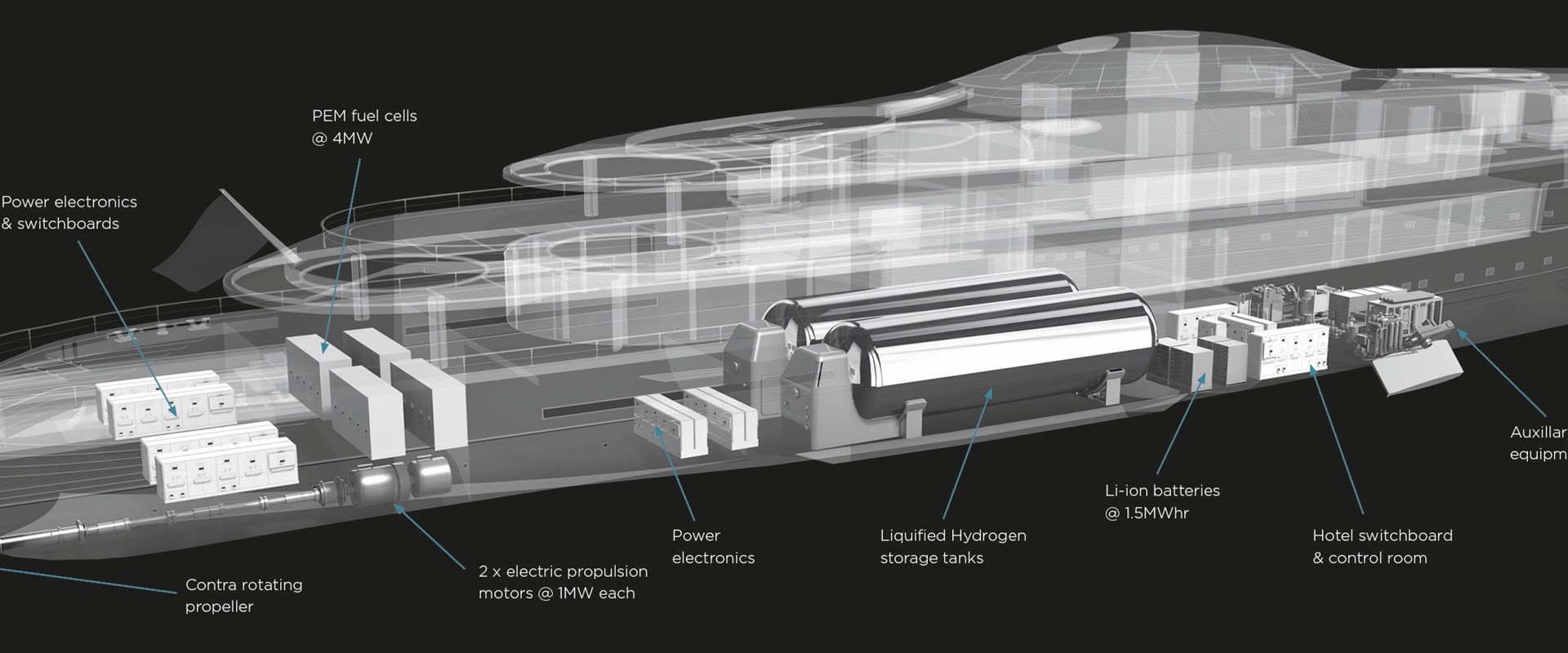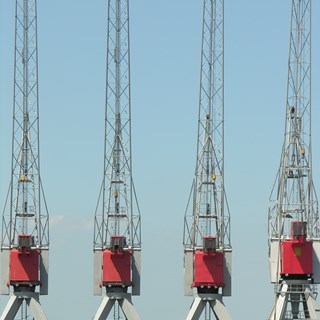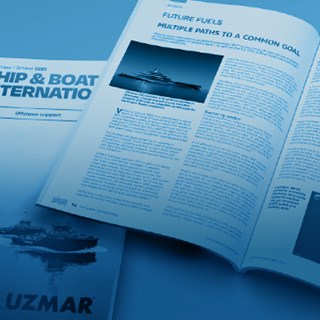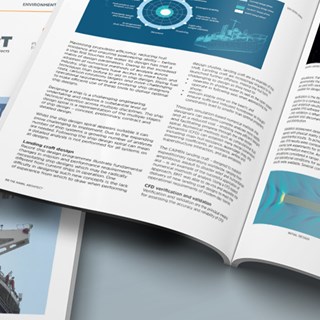
Getting ready for the future
The future is nearer than we think; it is right now. The future is what we will do when we finish reading these words. It is an hour away, a minute away, a second away. The actions we take today are the future.
29 June 2021
With this perspective, how would we create a future superyacht, today? What technology would we employ to deliver on the known certainties of the future, and yet avoid obsolescence from the uncertainties we don’t know?
Shipping, yachting and the marine industry have traditionally had a fairly easy ride when it comes to emissions, perhaps by dint of the fact that the polluting aspects of marine operation happen over the horizon, or under the water.
This has progressively changed in recent years. MARPOL’s more rigorous control of NoX and SoX emissions has brought drastic change in the technology ships use. The banning of high sulphur fuel has driven the rise of LNG fuelled ships, and new standards have challenged us to find advanced exhaust aftertreatment solutions. These technological developments in the face of tightening regulation prove that marine industry is agile in a sustainable economic way, given the right driving factors. The regulatory landscape is tightening further, not just on local pollutants such as emissions of nitrous oxides, sulphur and particulates, but also global emissions of carbon.
This creates drivers that will push us towards future decarbonisation of the marine industry; we call this the Three Rs.
Firstly, REGULATION will be a driver. Where public opinion becomes political will, legislation is formed, and the regulatory framework will be put in place. Currently, the member states of the International Maritime Organization have set a target to reduce shipping’s carbon emissions by at least 50% (based on 2008 levels), and in 2023 will set out how it will legislate to achieve the 2050 net zero target. At a more local level, regulations to ban carbon emissions altogether have been put in place. From 2026, the UNESCO Norwegian Fjords will ban the entry of any vessel emitting carbon. It is highly probable that other areas of the world, ‘bucket list’ locations that see high levels of traffic, will follow suit. This may include many cruising grounds of superyachts.
The second is REVENUE. In the commercial marine market, the drivers will be economic. Capitalism will push innovation in order to gain a competitive advantage, all in the interest of shareholder return. However, there are currently very few commercial reasons for operators to use a zero carbon fuel. All current projects in this area are either supported by government subsidies or pilot projects. Whilst revenue earning ability is a nonissue, as a superyacht is (in the majority of the fleet) a leisure item, we can conclude that it is too early to commit to any one particular zero carbon fuel. We need to keep our R&D focused on a broad spectrum.
The third is environmental RESPONSIBILITY. Many companies are getting ahead of the curve, not just because of regulations, or revenues, but because they want to be socially responsible and have a sustainability policy at the heart of their business. Our clients are already asking for us to engineer, design and build yachts which can operate in a ‘leave no trace’ manner, perhaps even operate in a positive impact manner. Regardless of regulation, we have a responsibility to advance science in pursuit of zero.
However, whilst it is possible to construct a zero emissions superyacht today, there is no global infrastructure to serve it. The key, we believe, is not to commit to one particular future solution today, but to pursue a future proof strategy. Future-proofing a superyacht is the process of anticipating the future to enable informed choices of layout, configuration, technology and specification that will avoid obsolescence within the intended lifespan of the yacht.
There are many possible future fuel technologies that will lead to a zero emissions solution. We can strategize with certainty that an advanced all electrical architecture is an enabler to the use of future fuels. At a fundamental level, this suggests a diesel electric architecture. We know with certainty that battery technology will advance to offer greater capability which will in future years lead to improved system performance and reduced obsolescence. Additionally, a capability for emissions free operation is part of our strategy, which is best served via a battery based solution. An advancement of diesel electric could utilise a self-charging hybrid solution (Lateral E-Hybrid).
It is certain that all possible future fuels are less energy dense than current fossil fuels. Future technologies will consume more space than those used today. Even when we have a zero-carbon fuel, overall energy efficiency will be key to reducing size and weight. Firstly, this tells us that we need to pursue optimised platforms that operate in a fundamentally efficient solution space, via selection of principal dimensions, Gross Tonnage (proportional to weight) and operational parameters (speed envelope). Secondly, it tells us that we need to consider within layout of technical, service and guest spaces how in-built flexibility for future adaptation will be achieved by strategizing and scenario planning probable future outcomes.
One thing is clear, viewing the future as a distant event that we need to get ready for will lead us into inaction; with every step we take towards that future, it takes a step further away. If we can shift our thinking to living the future every day then we can bring more focus on action, today.

In 2018, James became Managing Director of Lateral Naval Architects, a strategic partnership between BMT and Oceanco, and has overall responsibility for building and developing a talented team of 55 engineers who apply knowledge and insight in the development of innovative technical platforms that underpin the world’s most advanced superyachts.
James has been a part of BMT since 2004, with extensive background in the naval architecture of complex and specialised vessels, and in 2006, took on the role of managing its yacht related activities.
James graduated from Solent University in 1996 with a first-class honours in Yacht and Powercraft Design, having also graduated from the Solent University’s HND in Naval Architecture two years previously. In 2019, James was awarded the honorary degree of Doctor of Engineering by Solent University.

N/A
We address certain key topics that have been brought to our attention by our valued clients during their assessment of inspection reports.

James Calver
Our Naval Architects speak to RINA Ship and Boat International about how we can assist our clients early on with Future Fuels for their next vessel design.

Greg Fisk
Major Projects Lead and Senior Principal Consultant, Greg Fisk, discusses the growing need for sector-specific guidance for marinas and boat yards, in-light of increasing regulation to decarbonise industries.

Johnathan Green
Through simulation-based numerical methods ship designers can perform complex analyses more rapidly and at a reduced cost. Johnathan Green explains how the successful application of numerical modelling has helped to de-risk and expedite delivery of new BMT landing craft designs.